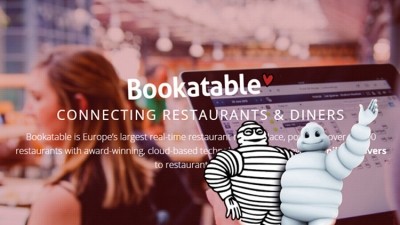Does fine dining have a future?

“It’s all cyclical though, right?” my mate laughs. “In five years it’ll all be tablecloths and polished silver.” We are mulling the casualisation of UK food. He is a civilian, not industry. He doesn’t like food halls but I’m telling him to get used to it, for the restaurant as defined by fine dining is over.
So soon after the Michelin 2020 awards, that may feel melodramatic. As it modernises at glacial pace, Michelin’s annual soirée is a chance for its stars and their admirers to reassure one another everything is fine: that the public still wants luxury dining at its most OTT. But does it? Here are 10 reasons why fine dining faces an existential crisis:
1. After a decade of economic stasis and Brexit uncertainty, folks feel skint. They are more likely to eat regularly at a lower cost than book big-ticket meals. Top-end dining was always a niche activity for food nerds and wealthy nobs, who happily pay to be pampered. Now, even the nerds are cautious.
2. Chefs aside, does anyone enjoy the awkward ceremony of staff explaining a chef’s philosophy, how a dish evolved, ingredients or a wine’s origins? Very few want that lecture, and such geeks can ask. The guest ‘journey’ should relax them. It is their night. It should not feel educational. Deformalising your restaurant is about more than staff wearing aprons: it is a 360° mindset.
3. Is your dining room oppressive? Do guests feel scrutinised by well-intentioned but hovering staff? Is it too quiet, too starchy, too clenched of buttock? You need to change: lighting, music, something. No one wants to eat in such a joyless environment.
4. The opening snacks are often the best bit of the tasting menu; much as starters and small plates were once more exciting than mains. That miniaturisation of intense, exhilarating flavours is logical (this is not about satiating hunger) but, objectively, such snacks could be served in a cost-effective, less uptight format.
5. By offering affordable small or sharing plates alongside tasting menus, forward-thinking restaurants are trying to reach out to a wider, more casual audience. But perceptions of exclusivity are difficult to shake. It goes beyond rejigging menus.
6. I was initially bemused by Mana’s pledge to serve 16 courses in 105 minutes. Given the cost, wouldn’t people want to linger for hours? But in an era when everyone is cramming more and more into their lives (particularly those eating at this level semi-regularly), who has five hours to give over to dinner?
7. The days of dictatorial chefs as self-appointed arbiters of taste are over. Millennials particularly (hence the rise of food halls), expect a wide choice of cuisines and dishes as standard. They will not splash their limited cash on rigid menus of baffling ingredients.
8. Similarly, high-end resistance (‘This is my art!’) to feeding vegans, vegetarians or accommodating dietary requirements and substitutions is very ballsy when the high street is adapting nimbly, eagerly even, to this new reality. All chefs must design greater flexibility into their menus.
9. Instagram has upended the traditional hierarchy. Food is now a profoundly visual arena where boisterous burgers or Calum Franklin’s ornate pies are increasingly seen (rightly!) as equal creatively and in their broader value to technically audacious high-end dishes. Michelin-star restaurants are no longer the crème de la crème but one stylistic feature of a vibrant scene.
10. From street food to relaxed post-Nordic restaurants, there are now numerous career paths for ambitious young chefs. Therefore, why submit yourself to the crazy hours and mentally exhausting pressure of Michelin-obsessed kitchens?










